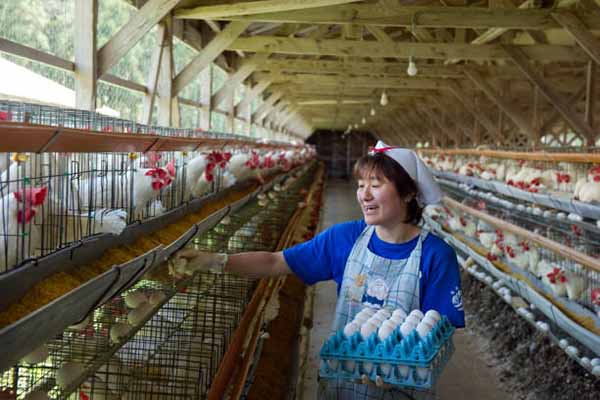The Impact of Humidity Control on Chicken Growth in Uganda Chicken Farms
Time : 2025-04-23
Uganda, a country rich in agricultural potential, has seen a significant rise in the poultry industry. Among the various factors that contribute to the success of chicken farming, humidity control plays a pivotal role. In this article, we’ll delve into how managing humidity can impact chicken growth in Uganda’s chicken farms.
Understanding Humidity in Chicken Farms
Humidity refers to the amount of water vapor present in the air. In the context of chicken farming, it’s crucial to maintain an optimal level of humidity for the health and growth of the birds. In Uganda, where the climate varies from tropical to arid, managing humidity becomes even more challenging.
Why is Humidity Control Important?
1. Preventing Diseases: High humidity can create a breeding ground for bacteria and viruses, leading to respiratory diseases in chickens. Conversely, low humidity can cause stress and weaken the immune system of the birds.
2. Optimal Growth: Chickens need a stable environment to grow efficiently. Extreme humidity levels can either slow down or halt their growth, affecting the overall productivity of the farm.
3. Feed Efficiency: Humidity affects the quality of feed. High humidity can lead to spoilage, reducing the nutritional value of the feed and impacting the birds’ growth.
The Role of Humidity Control Systems
To ensure the optimal growth of chickens, humidity control systems are a necessity. These systems can range from simple fans and air conditioners to more advanced dehumidifiers and ventilation systems.
Dehumidifiers
Dehumidifiers are devices that remove moisture from the air, reducing humidity levels. In Uganda’s chicken farms, these are particularly useful during the rainy season when humidity can soar.
– Installation: Place dehumidifiers strategically around the farm to evenly distribute the dry air.
– Maintenance: Regularly clean the dehumidifiers to prevent mold and bacteria growth.
Ventilation Systems
Proper ventilation is key to managing humidity. It helps in removing excess moisture from the air and bringing in fresh air.
– Natural Ventilation: Use windows and vents to allow air flow.
– Mechanical Ventilation: Install fans and blowers to enhance air circulation.
Case Studies: Successful Humidity Control
In several chicken farms across Uganda, humidity control has been successfully implemented. Here are a few examples:
1. Green Pastures Farm: By installing a dehumidifier and a ventilation system, the farm experienced a 20% increase in chicken growth rate.
2. Uganda Poultry Co-op: The co-op improved their humidity control by using a combination of dehumidifiers and natural ventilation. As a result, the mortality rate decreased by 15%.
Challenges and Solutions
Despite the benefits of humidity control, several challenges persist:
1. Cost: The initial investment for humidity control systems can be high. However, the long-term benefits often outweigh the costs.
2. Technical Knowledge: Operating and maintaining humidity control systems requires specialized knowledge. Farmers can seek training or hire experts to manage these systems.
Conclusion
In conclusion, humidity control is a crucial aspect of chicken farming in Uganda. By managing humidity levels effectively, farmers can ensure the health, growth, and productivity of their chickens. While challenges may arise, the long-term benefits of humidity control make it a worthwhile investment for any chicken farm.
—












